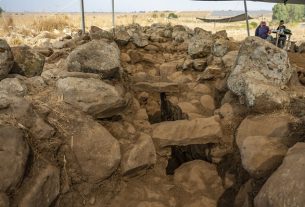Nevada Bans “Useless” Grass to Conserve Water
Nevada is expected to save 9.5 billion gallons of water annually.
The State of Nevada has a new law which requires the removal of “useless,” or purely decorative, grass throughout the Las Vegas Valley by the end of 2026. The law, unfortunately, does not apply to grass in homeowners’ yards, or to grass used for recreation at schools and parks. It does, however, deal with nonfunctional turf found around Southern Nevada business complexes, along streets in HOA communities, and in traffic circles and medians. It is grass that provides no recreational value.
Americans have gotten used to seeing grass in their deserts. Specifically, states like Nevada and Arizona have built up countless suburban homes with front lawns in deserts where grass cannot grow naturally due to a lack of rain. And then there are all of the golf courses in these regions with thousands of acres of grass.
–
[embedded content]
While this may seem like progress, modernization, bringing gardens to the desert, or however you want to describe it, environmentalists have long since decried the expansion of grass in the desert as a waste of water resources. And why do people need to have front lawns? If they live in a desert, then why not plant cactus gardens in front of their homes instead of grass? Grass does not do produce anywhere near enough oxygen to offset the CO2 in the atmosphere. Bushes and trees do much more for the environment and do not need as much water. And they can also provide much needed shade
Today, in part due to climate change, fresh water is becoming an ever scarcer resource. And countless gallons of water a day is wasted on watering lawns across the United States. But what to do?
Well hopefully what Nevada has done is a major step in the right direction
–
[embedded content]
Astro turf has come a long way over the years. It was originally developed for the baseball team the Houston Astros who played in a domed stadium with no sunlight. So grass could not grow there. The original solution was nothing more than a green carpet placed over a concrete floor. It was neither aesthetically pleasing nor comfortable. Today, however, recycled rubber and other materials are used to create a realistic and soft artificial turf. And no one is required to replace their grass with fake grass. Stone finishing’s or extended patios could be built.
The new law is expected to do away with as much as 40% of all of the grass currently in the state of Nevada, 8 square miles worth in the Las Vegas area alone. Nevada Governor Steve Sisolak commented that, “its incumbent upon us for the next generation to be more conscious of conservation and our natural resources, water being particularly important.”
–
Businesses: 📣📣📣 it’s time to get off your grass! Let’s face it, you have a lot more to think about than your landscaping. Learn about our Water Smart Landscapes Rebate program, and let us help your business be water smart. pic.twitter.com/gOOZrXK0GD
— Southern Nevada Water Authority (@SNWA_H2O) June 7, 2021
The Southern Nevada Water Authority is promoting the initiative and providing assistance to help people change over from natural grass. “We’re extremely appreciative of Gov. Sisolak and the Nevada Legislature for approving this measure, which will enable the community to expand on its commitment to conserving water in the face of ongoing drought conditions and climate change,” said SNWA General Manager John Entsminger.
Mr. Entsminger also pointed out that the State of Nevada will no save 9.5 billion gallons of water annually, which represents about 10 percent of its total annual water supply from the Colorado River at Lake Mead.
Read more about: Nevada, Steve Sisolak, The Southern Nevada Water Authority






